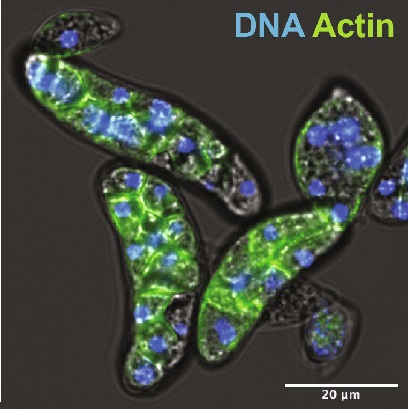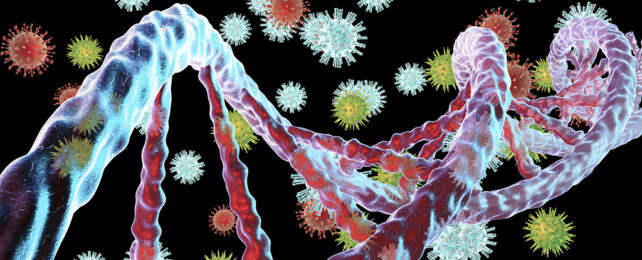Scientists have found the remnants of genomes left by ancient, giant viruses within the DNA of a single-celled organism with which complex organisms like ourselves share a common ancestor.
The discovery suggests viruses may have played a greater role in our evolution than we realized, contributing genes that may have given cells like the ancestor of the symbiotic eukaryote Amoebidium an edge in survival.
This new research comes from a team led by Queen Mary University of London evolutionary biologist Alex de Mendoza Soler.
"It's like finding Trojan horses hiding inside the Amoebidium's DNA," he says. "These viral insertions are potentially harmful, but Amoebidium seems to be keeping them in check by chemically silencing them."

"Here, we show how a unicellular eukaryote closely related to animals undergoes a recurrent process of mixing its genome with that of its giant virus predators," the authors write.
Such rampant attacks on the very blueprint of the self should have a lethal outcome for the Amoebidium, but the microbes seem to have found a way to cope by silencing these foreign genes by modifying one of the four letters in the DNA alphabet using a mechanism called 5-methylcytosine (5mC).
The base cytosine, or 'C', is modified by an enzyme called DNMT1, which is found in all multi-celled organisms. The researchers wanted to find the enzyme's pre-animal roots, leading them to a protist called Amoebidium appalachense, which was first discovered hiding in the exoskeletons of freshwater insects.
They found that not only do these single-celled organisms produce DNMT1, they've used it to maintain a surprising amount of genetic material from giant viruses that have since been lost to history.
"These findings challenge our understanding of the relationship between viruses and their hosts," says de Mendoza Soler.
While viruses are traditionally seen as invaders, he says his team's study suggests a more complex story.
The researchers propose that this coping mechanism allows the microbes to not only survive the influx of giant virus DNA, but to incorporate it into their lineage.
To see if this phenomenon might be more widespread, they compared the genomes of a variety of isolated Amoebidia. They found a high level of diversity across the viral material, suggesting the process is ongoing and dynamic.
"Viral insertions may have played a role in the evolution of complex organisms by providing them with new genes. And this is allowed by the chemical taming of these intruders' DNA," de Mendoza Soler says.
And because A. appalachense is an animal relative, these findings may help us better understand a similar phenomenon going on inside our own bodies.
Humans and other mammals also have the remnants of ancient viruses entwined in their DNA. Referred to as endogenous retroviruses, they're believed to be the leftover bits and pieces of viruses that didn't manage to kill us.
Once assumed to be nothing more than inactive trophies of a failed invasion, it's increasingly thought many may have provided some benefit to still be preserved in our DNA.
This research was published in Science Advances.
